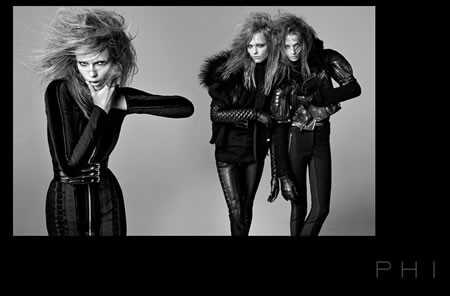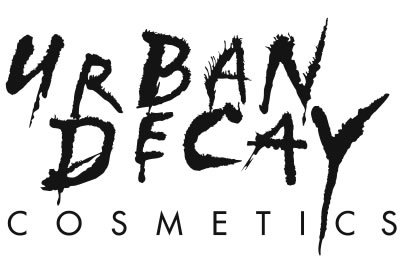
Attitude, growth, solutions, strategy, design, charisma, trend leadership and responsiveness. Brands that live and brands that die.
There’s a curious challenge in the realm of celebrity brand development. Some evolve happily, growing, selling up, selling out and moving onwards into their own reach of market place. Working with the founding team of Urban Decay, Wende Zomnir and Sandy Lerner (the cofounder of Cisco Systems). The visionary character there is about creating something — a certain shade of color, for example — that before that time hadn’t “existed” in the market. Oil Slick. Acid Rain, Smog. Rust. The opening explication, for Girvin, lay in this urban camouflage. Our role lay in identity, the foundational storytelling in visualization.

Selling up? Urban Decay was sold to Louis Vuitton’s portfolio. And the story continues.
What I found in that opening examination — working with brand innovators — was the concept of the passion of the creative wandering in building a dream that could be, would be, something to found a life on. Principals, in exploring principles. For me, brand is inherently about that: the passion of finding the right thing, the right dream.
In speaking with Sir Kenneth Robinson about the concept of the personal path, what he calls The Element, it’s about that idea of the approach of passion — that insistent theming that relates to the nature of instinct and impression in noting the thread of the visioning of the person. That, implicitly, is the fascination of the human brand for me; that the concept of creating brands, notions of commerce and enterprise are incipiently linked to the spirit of the person — their visioning — and how that beauty (hopefully) will always be there, evolving, growing, tending to the shifting. What he’s called, in a recent Design Summit in Sarasota, Florida — the “web of possibility and imagination.” To his sense of stepping forward, the concepts of creativity are at the heart of the celebration of human imagination and how we might put this to work — the passionate link of creative action, of doing what you love and the potentials for larger contribution: “Following our own true north, in advancing human kind.” What he’s referenced, as well, the idea of reaching to the essential character of the creative (and brand building act) which is really about getting to the sense of the essential, broken to fundamentals, that can fabricate the “red thread” of being. That, in a way, is what it’s all about (brand, story, history, community, connectivity) — the idea of finding the “snapping line” of passion that will drive the character of community, communication and relationships. We’ve talked about passion.
That idea of brand, in principle, needs to resonate in the person — and the leadership team — there’s a place from which the fountain flows, the ignition of the fire.
I ponder brands that live — that evolve — and those that change, even die.
I follow fashion, what’s happening in that trending and shifting industry. Luxury it might be called — beyond simply the basics — for many. “For me, it’s not the time to be spending a lot of money on buying new clothes. I’ll use what I’ve got.” Phi, a fashionably tough-edged designer collection, created by Andreas Melbostad — a former protégé of Donna Karan and Calvin Klein — died at the close of 2009. The poorly performing luxury market, as well as the outlook for the future was defined as the lock on the closing of the brand’s doors. According to the N.Y. Times, “some of the label’s fans suggested it was too “niche” to survive through the recession. The spring collection, which will not be produced, included bandage jeans and dresses with scads of harness closures, so perhaps they had a point. The clothes always looked sort of as if Victoria’s Secret had been hijacked by the Hells Angels.”
The failure of the brand was challenging, to the opening section of this blog. To the nature of the “funded” celebrity brand, this label was a kind of pet project of Susan Dell, a fashion designer unto herself, as well as the wife of Michael Dell, the founder of Dell Computers. Phi was still growing and evolving, just as it closed down its fashion racks. Natalie Massenet, the founder of Net-a-porter.com, offered “The brand seemed to us as a textbook case of how to build a modern fashion house,” Ms. Massenet said. “The collections were always strong and directional, yet commercial and impeccably made. If a business like that can’t succeed, then I worry for so many other young brands.”
This notation, to the concept of principles in the spirit of brand survival is — does your brand live, or die, on principle? According to Julia Hansen, CEO of Phi referenced that the closure was, in actuality, influenced by the many expectations that the brand price down, to meet retailer demands.
They said no. According to Ms. Hansen, there was too much “pressure to go down a path that we felt would compromise the integrity and value of the brand.” It was about being realistic.
The realism here, for me, is about the nature of the realistic character of holding to the dream — embracing the power of that statement, in addition to the snapping line of the principle goes back to the heart of the brand statement. Human brands. Brands made by people — the principles and passions of their commitment to the ideal — for people.
It’s a beautiful thing.
Tim Girvin
tsg
….
Brands | love | humans
Tim Girvin | GIRVIN | girvin@girvin.com
c. 206.890.0621
New York City + Seattle | Tokyo
the reels: http://www.youtube.com/user/GIRVIN888
girvin blogs:
http://blog.girvin.com/
https://tim.girvin.com/index.php
girvin profiles and communities:
TED: http://www.ted.com/index.php/profiles/view/id/825
Behance: http://www.behance.net/GIRVIN-Branding
Flickr: http://www.flickr.com/photos/tgirvin/
Google: http://www.google.com/profiles/timgirvin
LinkedIn: http://www.linkedin.com/in/timgirvin
Facebook: http://www.facebook.com/people/Tim-Girvin/644114347
Twitter: http://twitter.com/tgirvin